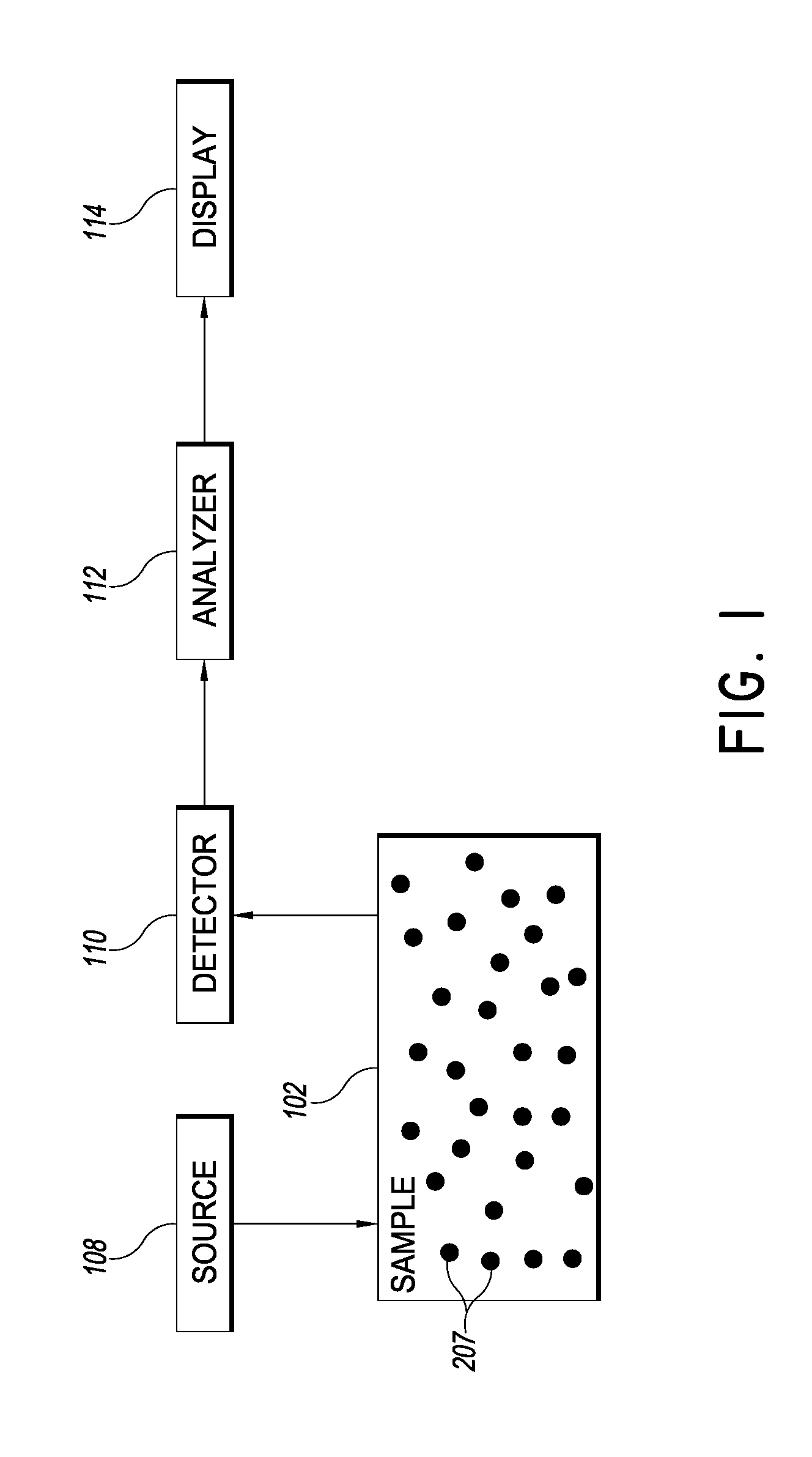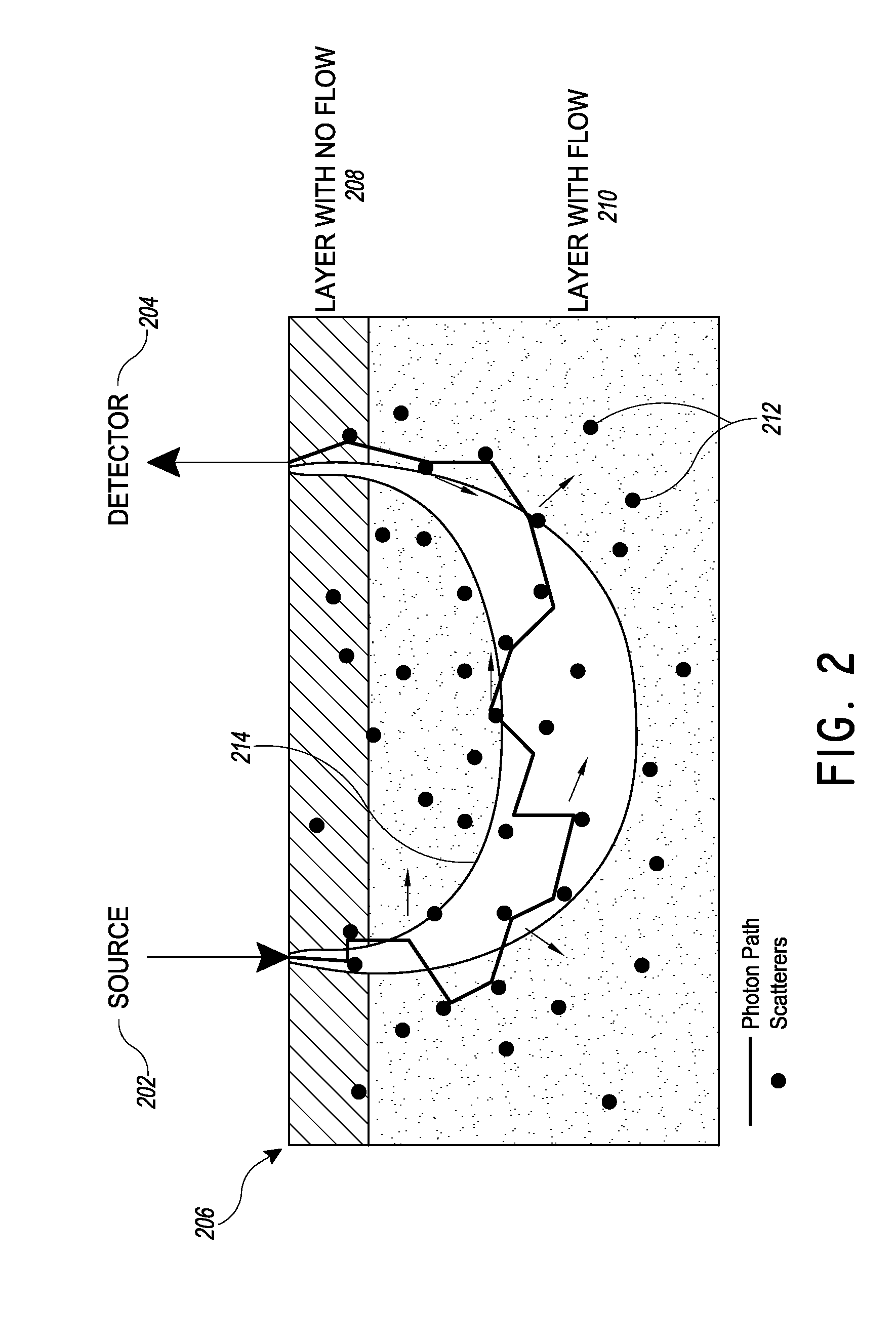Deep tissue flowmetry using diffuse speckle contrast analysis
a contrast analysis and deep tissue technology, applied in blood flow measurement, sensors, medical science, etc., can solve the problems of low sampling rate, low channel number, and difficulty in multi-channel measuremen
- Summary
- Abstract
- Description
- Claims
- Application Information
AI Technical Summary
Benefits of technology
Problems solved by technology
Method used
Image
Examples
Embodiment Construction
[0026]Over the last decade or so, DCS technology has been developed, validated, and employed to noninvasively probe the blood flow information in deep tissue vasculature such as brain, muscle, and breast. In contrast to some other blood flow measurement techniques, such as positron emission tomography (PET), single photon emission computed tomography (SPECT), and xenon-enhanced computed tomography (XeCT), DCS uses non-ionizing radiation and requires no contrast agents. It does not interfere with commonly used medical devices such as pacemakers and metal implants. It therefore has potential in cancer therapy monitoring and bedside monitoring in clinical settings.
[0027]However, traditional DCS analysis suffers from a long integration time, high cost, and low channel number of simultaneous measurements. One factor contributing to these limitations is dependence on very sensitive photodetector and subsequent autocorrelation calculation. An improved flowmetry system provides cost-effecti...
PUM
 Login to View More
Login to View More Abstract
Description
Claims
Application Information
 Login to View More
Login to View More - R&D
- Intellectual Property
- Life Sciences
- Materials
- Tech Scout
- Unparalleled Data Quality
- Higher Quality Content
- 60% Fewer Hallucinations
Browse by: Latest US Patents, China's latest patents, Technical Efficacy Thesaurus, Application Domain, Technology Topic, Popular Technical Reports.
© 2025 PatSnap. All rights reserved.Legal|Privacy policy|Modern Slavery Act Transparency Statement|Sitemap|About US| Contact US: help@patsnap.com



